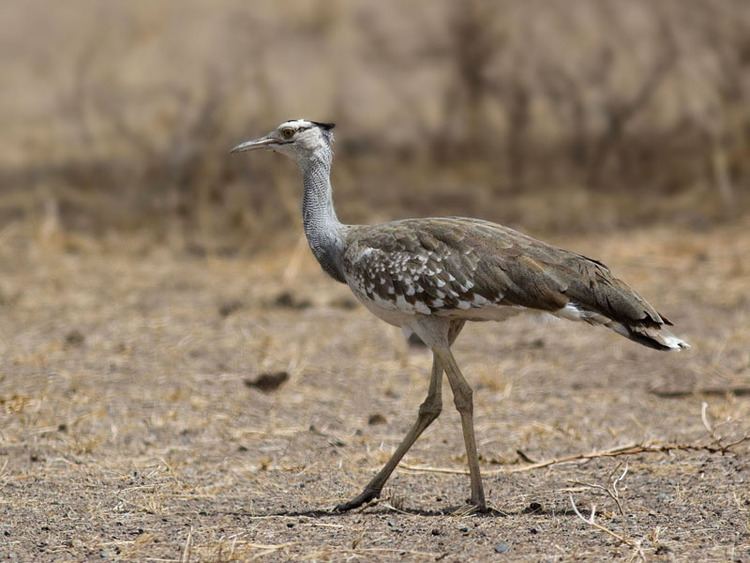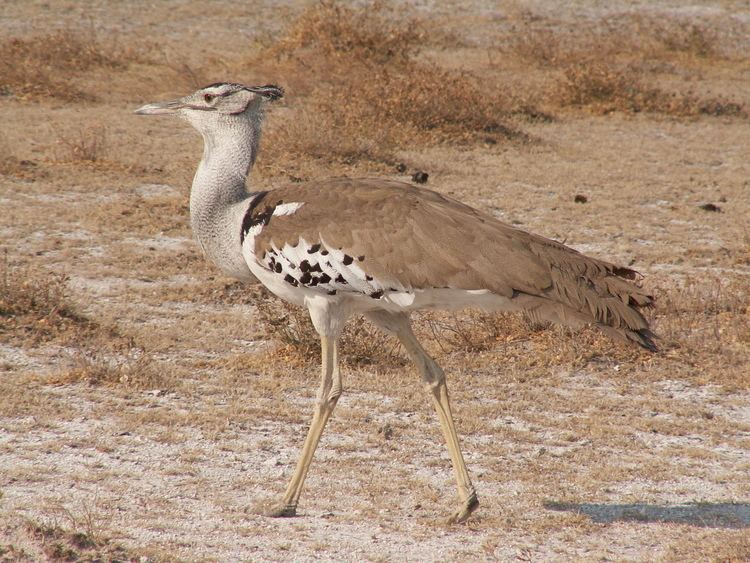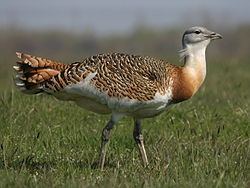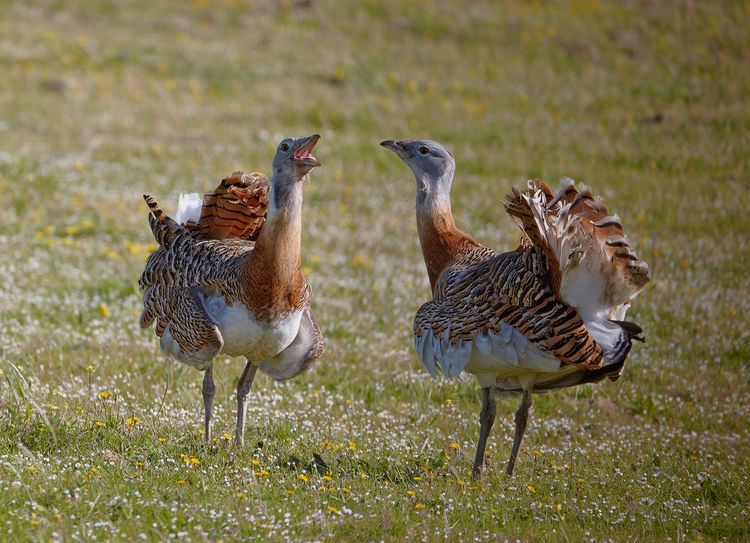Higher classification Gruiformes | Phylum Chordata Scientific name Otididae Rank Family | |
 | ||
Order OtidiformesWagler, 1830 Lower classifications | ||
Bustards, including floricans and korhaans, are large, terrestrial birds living mainly in dry grassland areas and on the steppes of the Old World. They range in length from 40 to 150 cm (16 to 59 in). They make up the family Otididae (formerly known as Otidae). Bustards are omnivorous and opportunistic, eating leaves, buds, seeds, fruit, small vertebrates, and invertebrates.
Contents
- Meeting the great bustard
- Description
- Behaviour and ecology
- Taxonomy
- Status and conservation
- Floricans
- References

Meeting the great bustard
Description

Bustards are all fairly large with the two largest species, the kori bustard (Ardeotis kori) and the great bustard (Otis tarda), being frequently cited as the world's heaviest flying birds. In both the largest species, large males exceed a weight of 20 kg (44 lb), weigh around 13.5 kg (30 lb) on average and can attain a total length of 150 cm (59 in). The smallest species is the little brown bustard (Eupodotis humilis), which is around 40 cm (16 in) long and weighs around 600 g (1.3 lb) on average. In most bustards, males are substantially larger than females, often about 30% longer and sometimes more than twice the weight. They are among the most sexually dimorphic groups of birds. In only the floricans is the sexual dimorphism reverse, with the adult female being slightly larger and heavier than the male.

The wings have 10 primaries and 16–24 secondary feathers. There are 18–20 feathers in the tail. The plumage is predominantly cryptic.
Behaviour and ecology

Bustards are omnivorous, feeding principally on seeds and invertebrates. They make their nests on the ground, making their eggs and offspring often very vulnerable to predation. They walk steadily on strong legs and big toes, pecking for food as they go. Most prefer to run or walk over flying. They have long broad wings with "fingered" wingtips, and striking patterns in flight. Many have interesting mating displays, such as inflating throat sacs or elevating elaborate feathered crests. The female lays three to five dark, speckled eggs in a scrape in the ground, and incubates them alone.

Bustards are gregarious outside the breeding season, but are very wary and difficult to approach in the open habitats they prefer.
Taxonomy
The family Otididae was introduced (as Otidia) by the French polymath Constantine Samuel Rafinesque in 1815.
Family Otididae

Status and conservation
Most species are declining or endangered through habitat loss and hunting, even where they are nominally protected. The last bustard in Britain died in approximately 1832, but the bird is being reintroduced through batches of chicks imported from Russia.
In 2009, two great bustard chicks were hatched in Britain for the first time in more than 170 years. Reintroduced bustard also hatched chicks in 2010.
Floricans
Some Indian bustards are also called Floricans. The origin of the name is unclear. Thomas C. Jerdon writes in The Birds of India (1862)
I have not been able to trace the origin of the Anglo-Indian word Florikin, but was once informed that the Little Bustard in Europe was sometimes called Flanderkin. Latham gives the word Flercher as an English name, and this, apparently, has the same origin as Florikin.
The Hobson-Jobson dictionary however casts doubt on this theory stating that
We doubt if Jerdon has here understood Latham correctly. What Latham writes is, in describing the Passarage Bustard, which, he says, is the size of the Little Bustard: Inhabits India. Called Passarage Plover. … I find that it is known in India by the name of Oorail; by some of the English called Flercher. (Suppt. to Gen. Synopsis of Birds, 1787, 229. Here we understand the English to be the English in India, and Flercher to be a clerical error for some form of floriken.
